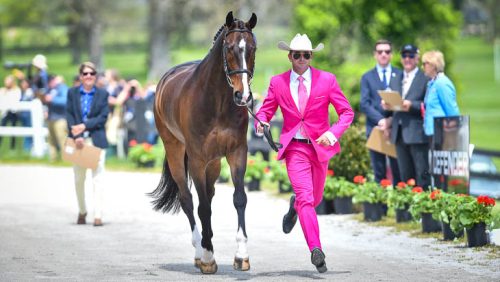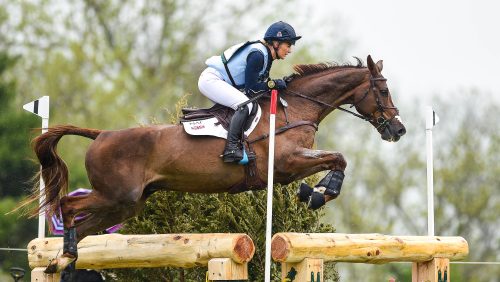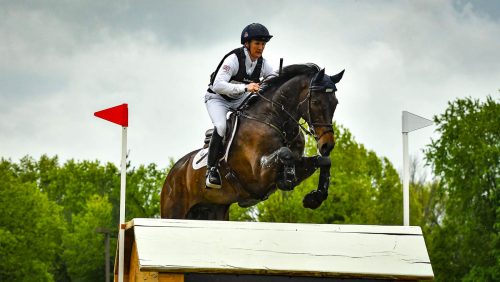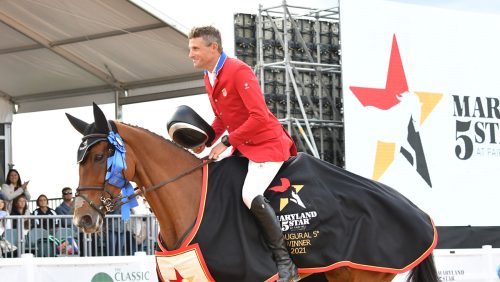George H. Morris is a legendary rider, horseman, author and teacher, not to mention serving as the chef d’equipe for the U.S. show jumping team from 2004 to 2012. He has always preached the importance of riding without stirrups, and in a Chronicle interview in 2011 he took a few moments to underscore the importance of everyone’s least favorite training experience.
Q: What are the benefits to riding without stirrups?
A: The primary benefit is to develop your seat. Also, it improves what I call the ability to “stick” to a horse. In the classical riding schools of Europe, riders were required to ride without stirrups for the first three years they were there.
Q: At what level should a rider begin practicing without stirrups?
A: In an ideal world, beginner riders should be started on a calm horse on the longe line without stirrups right from the start. These exercises benefit riders of all levels. In Germany, following the same concept of teaching a rider about seat, balance and independence, most children are started with vaulting as a complement to their riding careers. But riders of all ages and levels can start now to make riding without stirrups a habit and thereby improve their riding.
Q: How should a rider go about beginning work without stirrups?
ADVERTISEMENT
A: Starting out at the walk on the longe line is a great way to get started, and at first go for just five or 10 minutes. You can hook the fingers of one hand under the front of the saddle for more security. This also helps to move your seat forward to encourage better position and a deeper seat. Or, depending on ability, more advanced riders can walk-trot-canter with just one hand on the reins. Make sure you sit evenly in the saddle (not more to one side or the other).
Q: What types of exercises should be done without stirrups?
A: Here are a number of exercises I encourage riders to practice:
- With reins bridged in one hand, circle free arm forward, upward and backward;
- Again with reins in one hand, reach forward to touch horse’s ears, then down to touch rider’s toes (on each side), and back towards top of horse’s tail;
- Repeatedly lift and hold both legs away from the horse’s sides for a second, like a “pair of scissors”;
- Place legs forward over the front of each side of the saddle;
- Rotate feet in small circles;
- Rotate head in small circles (Caution: watch for lightheadedness);
- For more advanced riders, any other dressage movements, such as lateral movements, transitions, lengthenings, small circles (volte), counter canter and flying changes can all be schooled without stirrups.
Q: Do you encourage jumping without stirrups?
A: Absolutely! All serious riders should also be able to jump without stirrups. In fact, I can remember jumping 6-foot fences, bareback, in Falsterbo (Sweden). In “the old days,” riders in the cavalry even rode cross-country courses without stirrups. But for most riders, the jumps don’t have to be big to achieve results. Stick to this three-step progression, and don’t push too fast:
1) Start by longeing without stirrups on a dependable, safe mount;
2) Become confident with flatwork without stirrups;
3) Begin jumping small single fences without stirrups, then add in some gymnastic exercises.
ADVERTISEMENT
Q: Are there any exercises that should not be attempted without stirrups?
A: There isn’t anything in particular, so riders can be creative. But at the same time, don’t be a hero and take unnecessary risks.
Q: How often should someone ride without stirrups?
A: I ride without stirrups once a week, and that’s what I recommend for riders of all levels. Start with 15 or 20 minutes at a time and build up. I ride for a full session of at least 45 minutes once a week.
Q: How do you manage if your horse is not a willing partner?
A: Some horses get nervous when riders start working without stirrups. But it’s still good for both horse and rider. If there’s tension, it’s due to either the rider or horse (or both) getting nervous because they don’t school without stirrups enough. Don’t freak out—ride through it. Repetition is key! Everyone should be riding this way once or twice a week, even grand prix riders.
This article ran in its original form in the February 2011 issue of The Chronicle Connection.















